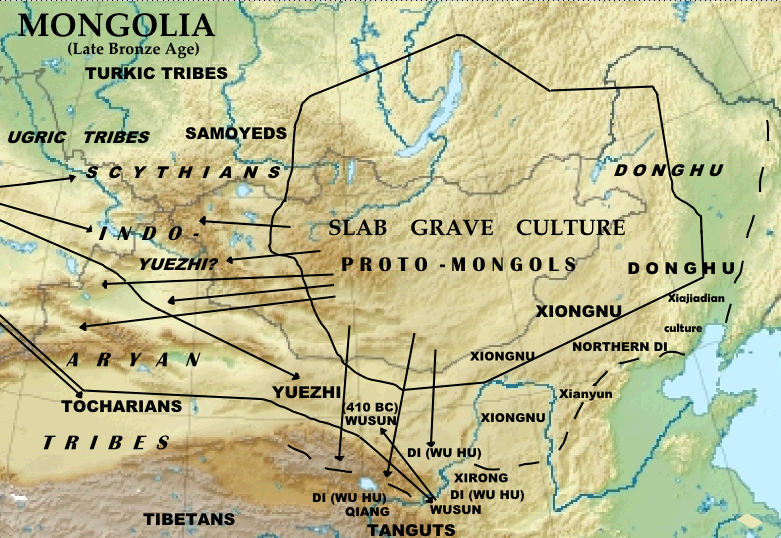|
Boraqchin (wife Of Ögedei)
Boraqchin was the first and eldest wife of Ögedei Khan. They had no surviving children. The earliest known Sino-Mongolian inscription, from 1240, mentions a "Yeke Qadun" or "Great empress". Some scholars have identified this figure with Boraqchin, while others argue that the inscription refers to Ögedei Khan's second wife, Töregene Khatun. See also * History of Mongolia Various nomadic empires, including the Xiongnu (3rd century BC–1st century AD), the Xianbei state ( AD 93–234), the Rouran Khaganate (330–555), the First Turkic Khaganate, First (552–603) and Second Turkic Khaganates (682–744) and oth ... * Ogedei Khan References Genghis Khan Women of the Mongol Empire {{Mongolia-bio-stub ... [...More Info...] [...Related Items...] OR: [Wikipedia] [Google] [Baidu] |
Ögedei Khan
Ögedei Khagan (also Ogodei;, Mongolian: ''Ögedei'', ''Ögüdei''; – 11 December 1241) was second khagan-emperor of the Mongol Empire. The third son of Genghis Khan, he continued the expansion of the empire that his father had begun. Born in 1186 AD, Ögedei fought in numerous battles during his father's rise to power. After being granted a large appanage and taking a number of wives, including Töregene, he played a prominent role in the Mongol invasion of the Khwarazmian Empire. When his older brothers Jochi and Chagatai quarrelled over strategies when besieging Gurganj, Genghis appointed Ögedei sole commander; his successful capture of the city in 1221 ensured his military reputation. He was confirmed as heir after further infighting between his elder brothers led to both being excluded from succession plans. Genghis died in 1227, and Ögedei was elected as khagan in 1229, after a two-year regency led by his younger brother Tolui. As khan, Ögedei pursued the ... [...More Info...] [...Related Items...] OR: [Wikipedia] [Google] [Baidu] |
Töregene Khatun
Töregene Khatun (also Turakina, , ) (d. 1246) was the Great Khatun and regent of the Mongol Empire from the death of her husband Ögedei Khan in 1241 until the election of her eldest son Güyük Khan in 1246. Background Töregene was born into the Naiman tribe. Her first husband was a member of the Merkit clan. Some sources state that his name was Qudu (d. 1217), son of Toqto'a Beki of the Merkits.C.P. Atwood ''Encyclopedia of Mongolia and the Mongol Empire'', p. 544 However, Rashid-al-Din Hamadani named her first husband as Dayir Usun of the Merkits. When Genghis conquered the Merkits in 1204, he gave Töregene to Ögedei as his second wife. While Ögedei's first wife Boraqchin had no sons, Töregene gave birth to five sons, Güyük, Kötän, Köchü, Qarachar, and Qashi (father of Kaidu). She eclipsed all of Ögedei's wives and gradually increased her influence among the court officials. But Töregene still resented Ögedei's officials and the policy of centralizing ... [...More Info...] [...Related Items...] OR: [Wikipedia] [Google] [Baidu] |
History Of Mongolia
Various nomadic empires, including the Xiongnu (3rd century BC–1st century AD), the Xianbei state ( AD 93–234), the Rouran Khaganate (330–555), the First Turkic Khaganate, First (552–603) and Second Turkic Khaganates (682–744) and others, ruled the area of present-day Mongolia. The Khitan people, who used a para-Mongolic language, founded an empire known as the Liao dynasty (916–1125), and ruled Mongolia and portions of North China, northern Korea, and the present-day Russian Far East. In 1206, Genghis Khan was able to unite the Mongols, Mongol tribes, forging them into a fighting force which went on to establish the largest contiguous empire in world history, the Mongol Empire (1206–1368). After the Division of the Mongol Empire, fragmentation of the Mongol Empire, Mongolia came to be ruled by the Yuan dynasty (1271–1368) based in Khanbaliq (modern Beijing) and administered as part of the Mongolia under Yuan rule, Lingbei Province. Buddhism in Mongolia began wit ... [...More Info...] [...Related Items...] OR: [Wikipedia] [Google] [Baidu] |
Genghis Khan
''Chinggis Khaan'' ͡ʃʰiŋɡɪs xaːŋbr />Mongol script: ''Chinggis Qa(gh)an/ Chinggis Khagan'' , birth_name = Temüjin , successor = Tolui (as regent)Ögedei Khan , spouse = , issue = , house = Borjigin , dynasty = Genghisid , regnal name = Genghis Khan () , temple name = Taizu () , posthumous name = Emperor Fatian Qiyun Shengwu () , father = Yesügei , mother = Hoelun , religion = Tengrism , birth_date = , birth_place = Khentii Mountains, Khamag Mongol , death_date = (aged 64–65) , death_place = Xingqing, Western Xia , burial_place = Unknown(presumptively Ikh Khorig, Burkhan Khaldun, Khentii Province) Genghis Khan (born Temüjin; ; xng, Temüjin, script=Latn; ., name=Temujin – August 25, 1227) was the founder and first Great Khan (Emperor) of the Mongol Empire, which became the largest contiguous empire in history after his death. He came to power by uniting many of the nomadic tribes of t ... [...More Info...] [...Related Items...] OR: [Wikipedia] [Google] [Baidu] |


